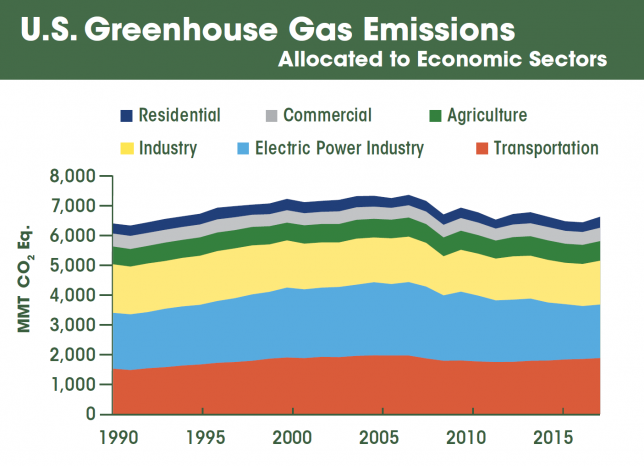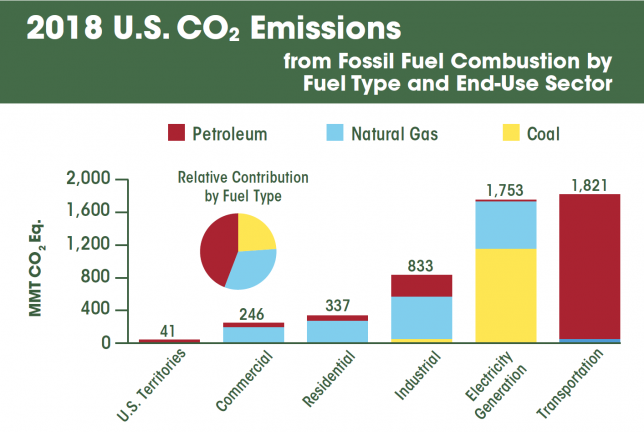Natural gas emissions vs. the field

The EPA’s Inventory of U.S. Greenhouse Gas Emissions and Sinks shows that annual emissions from the natural gas distribution system declined 73 percent from 1990 to 2018, even as natural gas utility companies added more than 760,000 miles of pipeline and 20 million new users. Distribution systems owned and operated by local natural gas utilities emit only 0.08 percent of produced natural gas.
According to EPA data, petroleum and coal look to be more serious concerns than natural gas. Meanwhile, the transportation sector is the largest contributor. Out of all the sectors shown, natural gas generation has reduced emissions the most over the past two decades.
Industry-wide natural gas emissions as a rate of production is now 1.0 percent—a level well below even the most stringent thresholds for immediate climate benefits achieved through coal-to-natural gas switching.

Emissions from natural gas generation and its network of pipelines should see further declines as the world come to terms with a sustainable future. Policies to reduce emissions should, however, aim to incentivize gas producers to install systems rather than forcing expensive systems and prohibitive standards.
What is needed to further reduce emissions is multifaceted: better pipeline seals and methane detection systems, the use of flare gas to generate electric power instead of flaring it into the atmosphere, and building more pipelines to channel natural gas to power facilities and LNG terminals. The sector should continue its investments in carbon capture and utilization and storage (CCUS) technology for natural gas as opposed to throwing the bulk of R&D dollars at coal CCUS.
In short: don’t rig the market against natural gas.
Fuel Flexibility in Heavy-Duty Gas Turbines: A Key Driver for Energy Transition
March 13th 2025From Hydrogen to HVO, Mr. Federico Bonzani, Chief Technology Officer of Ansaldo Energia, describes the fuel flexibility state-of-the-art solutions of the Company to meet the actual and future needs of power generation industry.